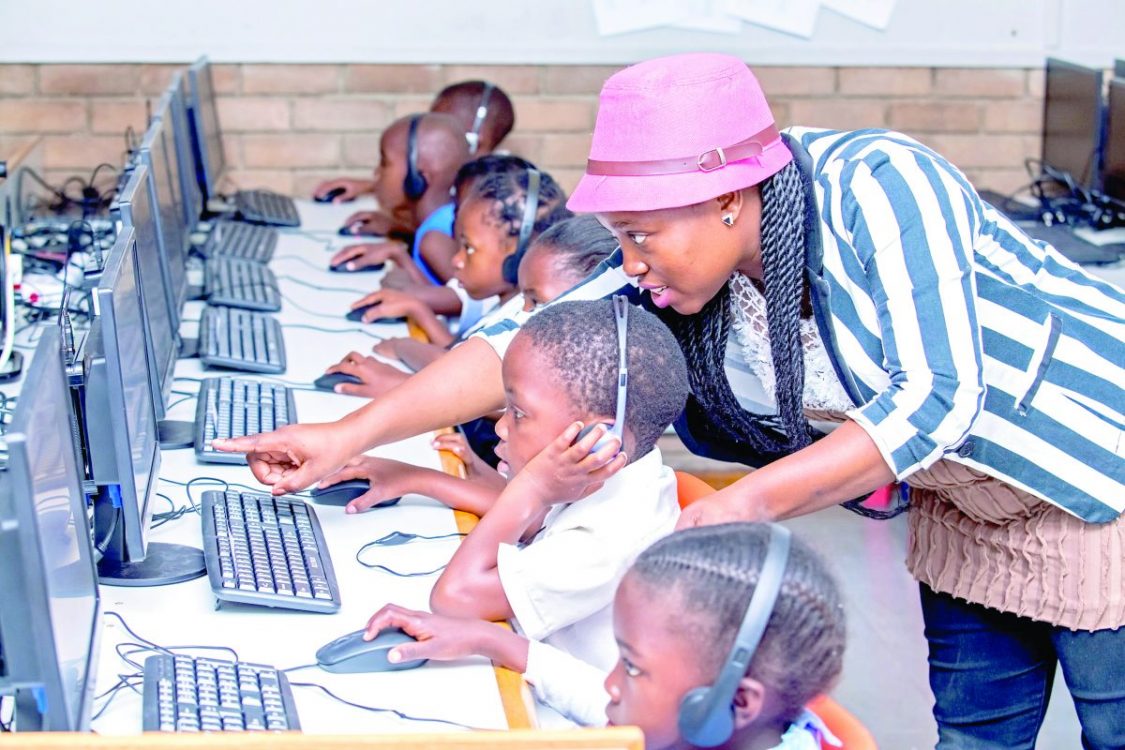Integrate technology from early years to nurture responsible digital citizens

One of the major components of the Competency-Based Curriculum (CBC) is integration of ICT from an early age of learning.
Already, technology is having a significant impact on the education landscape and its influence, educationists say, is expected will grow even more.
With the proliferation of digital devices and online information, it is essential to teach children how to navigate the digital landscape safely and responsibly.
One of the schools that has taken the technology aspect seriously is the Makini Schools, which has incorporated it right from pre primary level.
Makini’s Head of Innovations Vincent Omondi says teaching technology at an early age is critical as it helps children develop skills they need to be responsible digital citizens.
“We take technology seriously and we integrate it from as low as the early years of learning to the time when they graduate,” he says.
The school uses various tools and software depending on the learning outcomes, with Omondi saying that technology integrated in class can also be used by learners while at home.
When it comes to classroom integration, he says they use quizzes, audio visual and also offer learners to take coding. “We take coding very seriously and we introduce it at an early age. It has also been incorporated into JSS. The learners are taking coding lessons and by the time they leave junior secondary, they will have understood it better and will be able to create their own programmes and if they want to advance, it gives them a launching pad,” he explains.
Logically solve problems
Omondi explains that coding is giving instructions to computers and allows learners to think logically and critically.
Coding, also known as programming, involves translating human intentions into commands that computers can understand and is meant to equip learners with 21st Century skills from the basic level. “Anytime you are solving an issue with computers you create instructions, for example the way you have M-pesa on your phone…there are steps to use it and those steps are what someone behind the scenes creates and codes,” he explains.
Omondi says coding gives learners an opportunity to create programmes and as they do this, they are learning how to solve problems using logic, which is also useful for handling all other subjects.
He says that coding also provokes critical thinking and at the end of the day, the learner are not only able to work out problems but also promotes teamwork and helps in promoting their creativity as they come up with great programming ideas.
The school also has given learners to do robotics, where they create robots to perform specific functions.“All learners, right from Pre Primary 1 have access to the well-equipped computers in the school. As we use technology, we take consideration of children, like in preschool they have tablets, Grade One have devices and the more you go up the classes they have laptops. We take into consideration the level of the child. At preschool, teachers are keen on their psychomotor skills,” he explains.
In the school, ICT lessons are slotted in the timetable, everyone has to attend at least one lesson a week right from Pre-primary One.
Devise control
However, despite the progress made in integrating technology, Omondi says it has been a smooth ride.
In any school set up, he says connectivity has been a major challenge. “It is something we have been solving as we progress. In any given institution, the internet is sometimes a big issue but the school is addressing that,” he noted.
He said the school is working on a programme where they can monitor students while they are on their devices from a central point.
Omondi notes that the school is working on enhancing proper connectivity to be able to have control of devices, where they will install control software on the learners devices.
According to the curriculum guide for ICT integration in education, it is a major vehicle for teaching and learning from the earliest years.
The guide states that ICT provides greater opportunity for teacher-to-teacher, and student-to-student communication and collaboration and access to the worldwide web and the suggested teaching resources contained therein.
“It is at a very young age that learners begin to acquire digital skills which they increasingly use to explore and exploit the world of information and to craft that into knowledge. ICT facilitates the opportunity for more student centred teaching, more self-learning and more peer teaching,” states the guide.
Last year, the Kenya Institute of Curriculum Development (KICD) approved the first ever coding curriculum for primary and secondary schools.
Already, plans are underway for Kenyatta University to offer short courses for retooling teachers in an effort to enhance the teaching of coding and computational thinking in primary and secondary schools.
Kenyatta University Vice-Chancellor Prof Paul Wainaina says the short courses will focus on providing teachers with a solid understanding of the fundamental concepts of coding, as well as the tools and techniques needed to teach it effectively in the classroom.
As a key stakeholder in the education sector in the country, we took notice of last year’s approval of curriculum support material on coding by the KICD. To supplement this historic move, we are therefore taking our responsibility and position to ensure that our teachers are equipped with the latest knowledge and skills to deliver their mandate effectively,” said Prof Wainaina.
The training of Trainers model in this programme with Kodris Africa will see teachers in both private and public schools trained in coding who will transfer this knowledge to the classroom. It will be the first model of its type in the continent.












